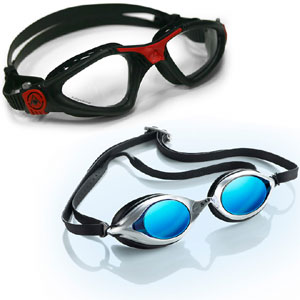blueseventy Apparel (2013)
As much as possible, we try to do reviews of products that our editors personally like, use, and purchase. This is one of those reviews. It does not mean that we necessarily like every single attribute of the product being reviewed, or every single product in a company’s line; it just means that we dig whatever we’re using and think it warrants telling our loving, dedicated readership about it (that’s you).
What are we talking about today? Triathlon clothing and goggles from blueseventy. Before someone calls me out, yes, the ‘b’ is supposed to be lower case.
Most people know blueseventy for their wetsuits. That’s how I was introduced to them, when I bought a first-generation Helix back in 2008. To date, it is still my favorite wetsuit. In fact, I’ve been given a couple other wetsuits for free since that time, and always find myself going back to the Helix. I’m not our resident wetsuit expert, so I can’t tell you the ins and outs of its thickness, rubber, or features (for that, click the review at the bottom of this page). I can tell you this: It feels great. For me, it set a new bar in full-sleeve wetsuit comfort.
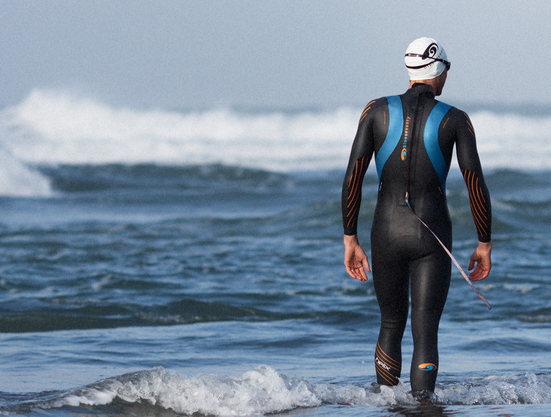
I also purchased a now-discontinued Point Zero swim skin in 2008, for use in non-wetsuit legal races. It is a neoprene suit, which means it’s WTC-illegal under the newest rules, but still legal for other races (Rev3, LifeTime, Challenge, and even 5i50). I still see a handful of these suits being used in the professional field – after all, they’re more buoyant and faster than the textile swim skins. I still use my Point Zero today, and it is in great shape. For such a thin ‘wetsuit’, it has weathered an incredible amount of transition area abuse, hot sun, travel, and washing.
blueseventy Triathlon Clothing
You might not know it, but a couple years ago blueseventy started making actual triathlon clothing. It seemed like a logical step to me – after all, most of their competitors make both wetsuits and race apparel.
I don’t know about you, but I’ve never been a fan of most triathlon race wear. It sure is convenient to be able to swim, bike, and run in the same outfit, but that’s where this love story ends. They’re not very comfortable. The legs are too short… or they’re too long… or the chamois isn’t really a chamois. The most common problem, however, is that the overall quality is very hit-and-miss. Often times, the material is thin, the grippers either fail or are non-existent, and logos come off.
Going in with that low expectation, the newest products from blueseventy blew me away. The stitching is robust. The material is thin and comfortable, but also strong. The chamois is a real, actual chamois… and it doesn’t feel like a diaper when you run. I don’t want to jinx myself, but I haven’t had a single chafe with it, either.
TX3000 Tri Suit – $240
The TX3000 Tri Suit is the first piece of blueseventy clothing I tried. It is their top-end suit and sells for $240. That price is near the high end of the spectrum; the 2XU Dark Shield Trisuit retails for $260, but Zoot’s top-end Ultra Tri Racesuit sells for $200. It seems that most high end single-piece kits are somewhere in the $200-250 range, so I’m not going to nickel and dime here.
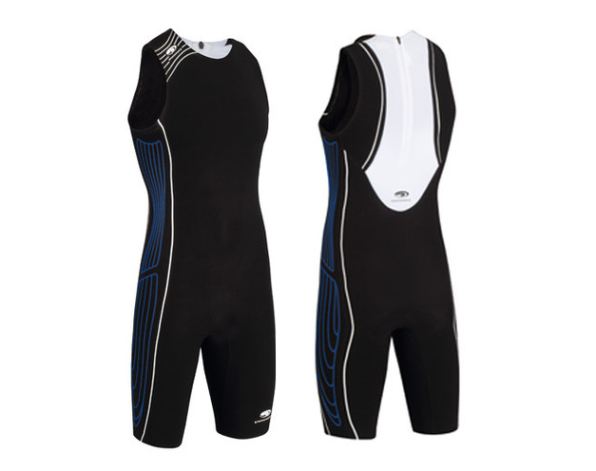
The TX3000 can be had in either a front or rear-zip model (my suit has the front zipper).
My favorite thing about this suit is the feel of the fabric. If it makes any sense, it feels about twice as thick as it actually is. I’ve used competing suits that cost the same, but fall apart in less than one season – usually failing at a stitch (e.g. where the chamois is sewn into the suit).
Some of the newer suits seem to go for the look and feel of the old ‘paper suits’ from the 90’s. The theme I’m seeing is that leg grippers are going away. Companies use various high-tech methods to laser-finish the legs, or otherwise finish the fabric end so it doesn’t fray. When I’ve tried this type of suit before, they felt cheap. They felt insubstantial. And – these were also the suits that fell apart the quickest.
The TX3000 has a unique take on the situation. If you look on the outside of the leg, it’s hard to tell if there is any seam or gripper:
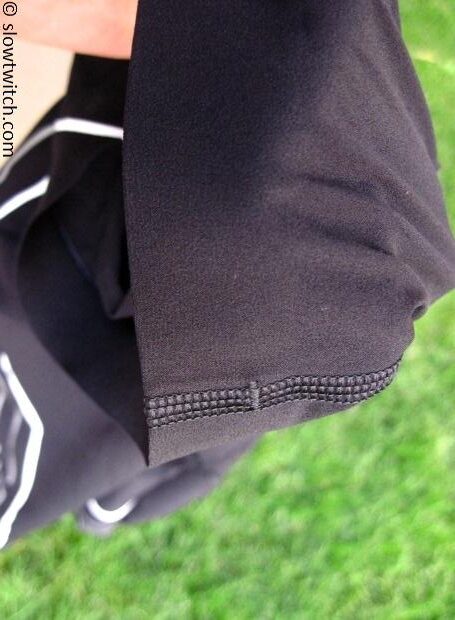
When you fold it over, however, you see that they simply doubled the fabric over for the last couple centimeters and welded it in place. The fabric resists stretching enough that a double layer acts as a very nice gripper. It feels like there is a definite end to the leg, without feeling bulky.
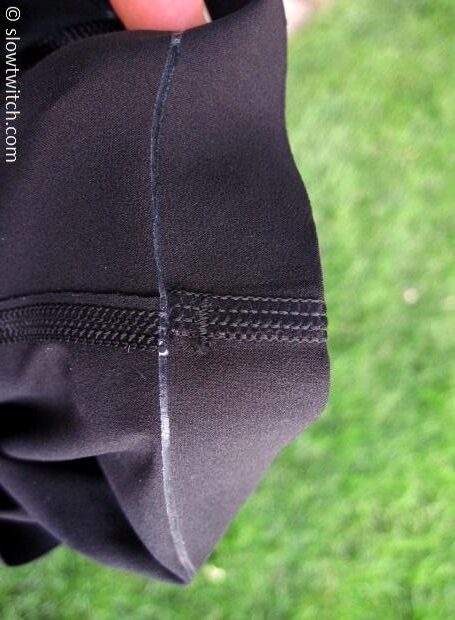
The TX3000 is definitely a race-intended garment. It has no pockets and no frills. I’ve been on-again, off-again with pockets in the past. My preference these days is to stuff anything I need (e.g. gel packets, salt tabs) into the top of my race kit; I’m usually not carrying that much, and it’s easier to access when it’s right on my chest. While I’m usually not one to make big statements, the TX3000 is the best one-piece race suit that I’ve ever used. I’m sure improvements can still be made, but as it stands, I really like it.
TX2000
From the second-tier TX2000 line, I’ve used the Tri Singlet ($85) and Tri Short ($99).
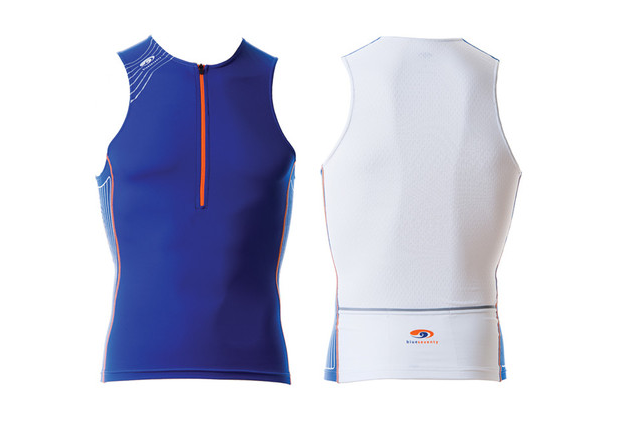
A two-piece suit such as this seems to be the popular choice for long-course racing. Why do you all-of-a-sudden need a two-piece for Ironman? It’s a long race… which means that bathroom stops are going to be necessary. All but the fastest athletes generally take the time to stop for this, and a two-piece kit makes the process faster. Many two-piece suits also have pockets on the back, like the TX2000.
The only downside is that – if the swim ends up being non-wetsuit – you need to use a swim skin on top to avoid a hydrodynamic penalty.
The TX2000 seems to be very close in quality to the 3000-series; the stitching is the same and the chamois is the same:
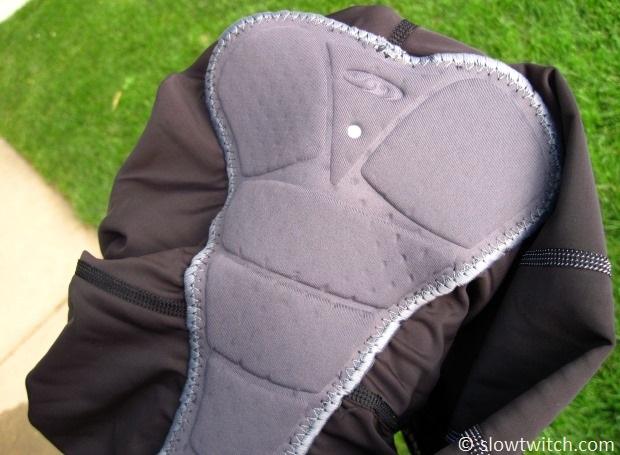
The key difference with the TX2000 is the leg gripper design. Rather than the minimal style of the 3000, it uses a more traditional design:
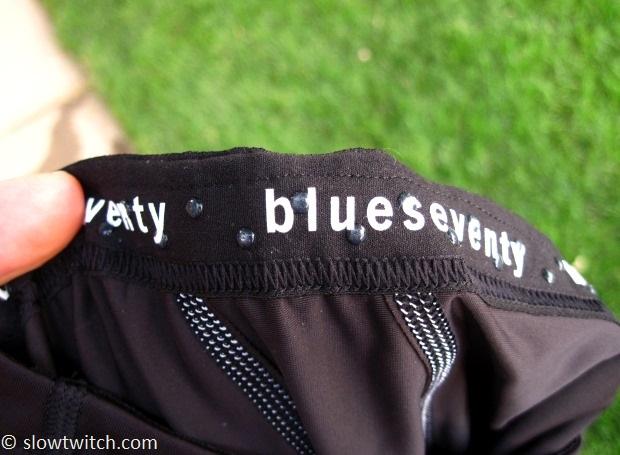
The little ‘dots’ of grip material actually work well. It keeps the shorts in generally in-place, without feeling restrictive or locking the legs in place. Speaking of leg length, the 8-inch inseam is right on target – not to short, not too long
Overall, I think the TX2000 line is a great value; it looks and feels almost like the TX3000. I haven’t tried the single piece TX2000 suit yet, but if the singlet and shorts are any indication, it’s probably the best quality-per-dollar single-piece suit that they offer.
At this time, blueseventy does not offer custom clothing, which may be a limiter for them (their sponsored athletes have screen-printed suits). Most of us don’t need logos on our kits, so I have a feeling that blueseventy will start to see more product in the field as time goes on.
Sizing
The only oddity with blueseventy seems to be the sizing. In almost every other brand, I wear a medium or medium-tall (@ 6’1”, 170lbs). Every wetsuit I’ve owned has been a medium-tall.
In blueseventy apparel, I wear large. Either my scale is lying and I’m gaining weight, or the clothing runs small. If you’re shopping in-person at a retail store, this should be a non-issue; online shoppers beware.
Vision Goggles – $20
Until about a year ago, I had no idea that blueseventy even made goggles. Well, they do. They sent along a pair of the Vision goggles to me, which are meant for open water swimming.
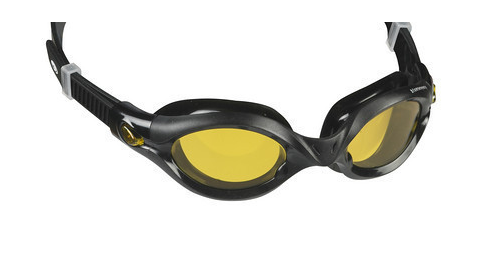
I’ve tried a ton of goggles, and these are far-and-away my favorite for open water swimming. The gaskets and straps are substantial and they stay put on your face. My test pair has the gold mirror lense; I have not tried their other options. Most mirrored or tinted goggles seem to ‘work’ just by making everything dark. They typically deal with sun glare, but if you start before that sun is up – it can be VERY dark.
I don’t know how blueseventy does it, but their lens does not just make it dark. It looks almost like it’s boosting the contrast in your field of vision, similar to what you can do to a picture in photo editing software. The field of vision is wide, and it is very easy to see where you’re going. For someone that is easily disoriented in mass-start swims, I have to think that a good goggle is about the best piece of equipment they can buy.
The potential downside with the Vision is that the nose piece is not adjustable. Personally, I prefer this type of design, and just test-fit in the store. The adjustable nose pieces always seem to be a source of trouble and/or early failure. I don’t have eyes that are particularly close together or far apart, and the Visions fit perfectly. If I had a pair with non-mirrored lenses, I’d use them in the pool in a heartbeat.



